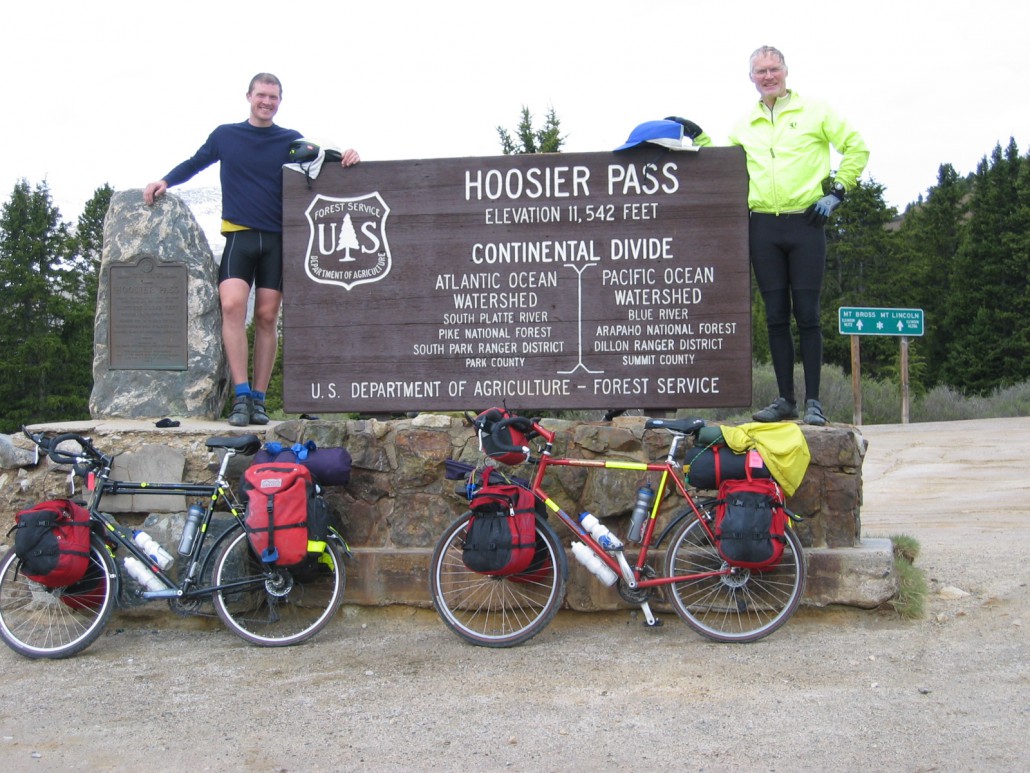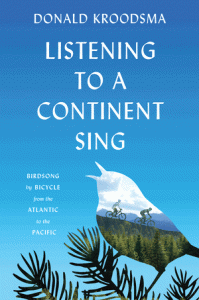
On May 26, 2016, in a special presentation at Denver Museum of Nature and Science, birdsong expert Donald Kroodsma shared stories from his incredible 10-week, 10-state bicycle journey with his son, from the Atlantic to the Pacific. Kroodsma’s book Listening to a Continent Sing is a celebration of singing birds and the voices of people along the way. From birds to flowers and trees, rocks and rivers, mountains and prairies, clouds and sky, weather and winds, Don brings the land to life as he shares this amazing journey with his son.
Recently, we had a chance to catch up with Don and talk with him about his adventures. Here’s the full interview:
I believe this is your first book to address ‘human song’–will this become a new area of specialization for you?
I am fascinated by human dialects, especially how they change through the East. As we bicycled through Virginia and Kentucky, I stopped to talk to a number of folks, and they were all willing to share their voices with me. On the companion website for my book, you can listen to them talk about the birds in their lives. Perhaps that is human music, of a sort—I think so. I should perhaps confess that I flunked piano lessons as a kid, so I’ll be sticking to bird music for the rest of my days.
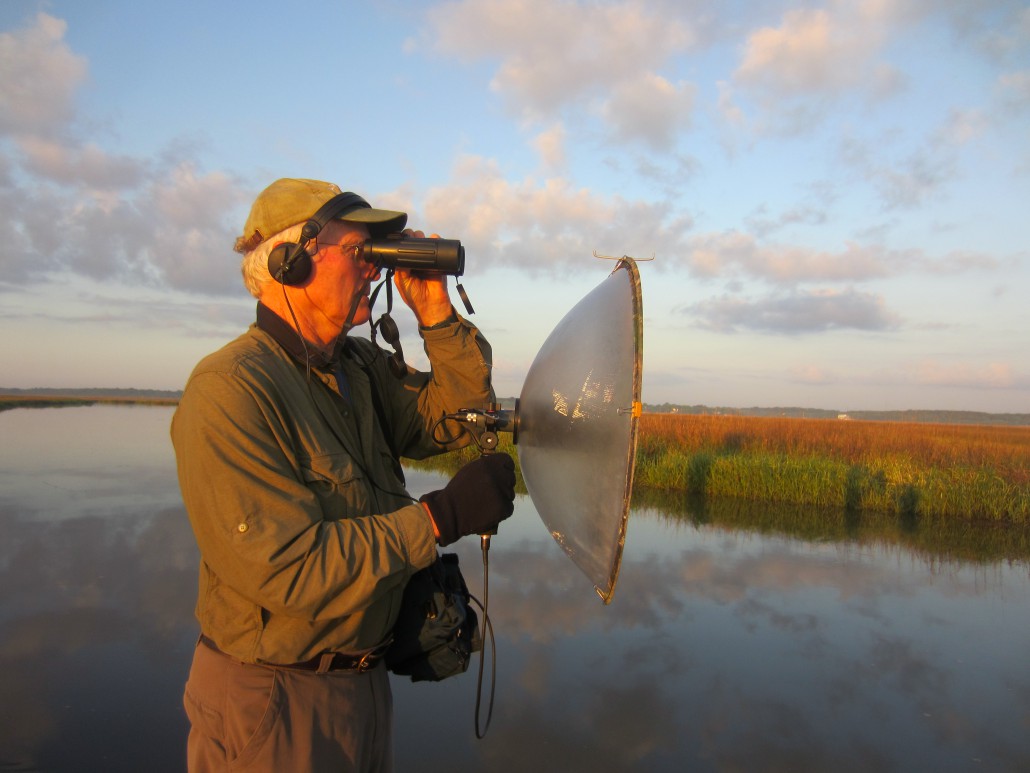
In this photo, Don uses a a microphone and parabolic reflector to pick up the calls of birds from a distance.
Is it easier for you to detect human or bird ‘accents?’ Do you notice different dialects? Do birds have a ‘Southern twang?’
Birds don’t recognize “the South” as we humans do, of course, but many of the song-learning songbirds do have noticeable dialects, in either songs (e.g., dickcissels, indigo buntings, cardinals, and so many more) or calls (red-winged blackbirds; my favorite is a Colorado dialect; listen at #CO-317 on my website). Many of those bird dialects we can readily hear (try the Missouri Dickcissels on my website), but I think we humans are especially well programmed to detect dialects in human voices. In our lives, we are programmed to recognize people who are “different” from us (for better or worse, often worse, sadly).
How do you organize one of your listening trips? What determines where you go? How many miles do you generally bike per day?
For our cross-country bike journey, we averaged 65 miles/day, but some days were short (0 miles) and others longer (up to 120 miles). That was a special trip, dedicated to listening from coast to coast, and I searched out special places along the way that I knew would have good listening opportunities. Out West, in open country, I sometimes began riding two hours before sunrise, just to hear the bird world awake; one of my favorites was an early ride out of Kremmling, on Father’s Day. Those early rides were truly special mornings, to know in the darkness that the sun’s first light is racing toward you at about a thousand miles an hour, with birdsong outpacing it, the two dawn waves racing around the globe.
For my other projects, I have special species and special individuals that I want to get to know, so I wait in the dark before the dawn, then listen to them for as long as my project warrants, sometimes all through the day.
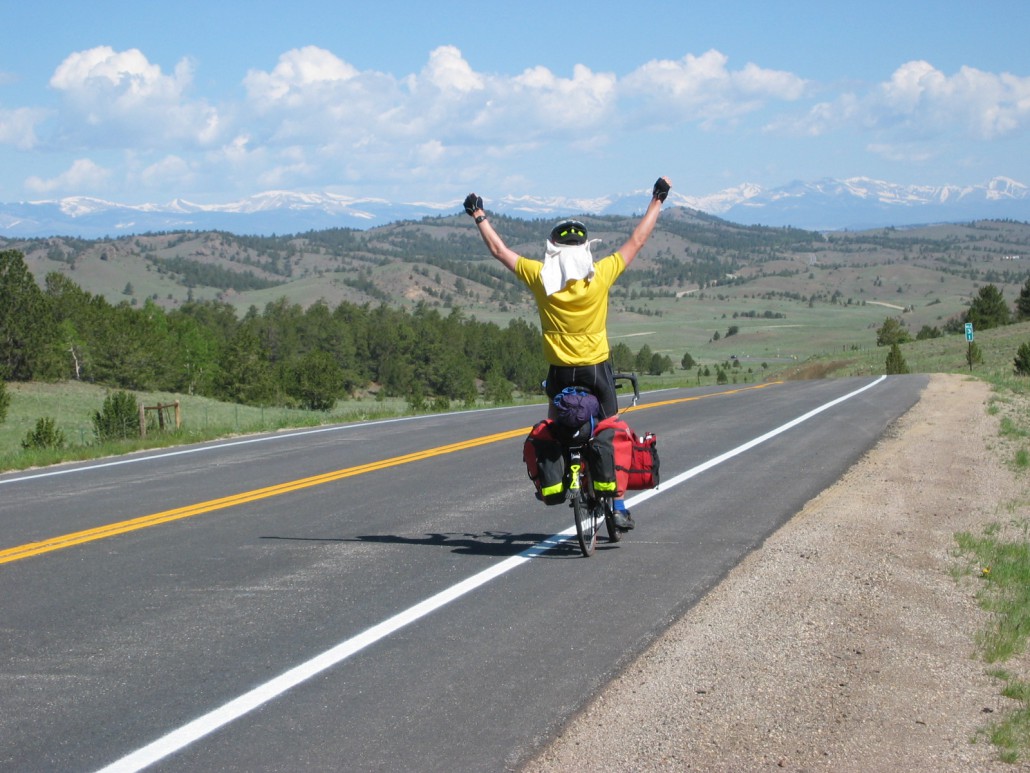
David celebrates another beautiful day on the trail.
Rate your son David’s birdsong identification skills!
I’m a morning person, David a night person. That presented certain challenges! But I’ll never forget the moment we crossed the Mississippi River, and he asked “What’s that?!” It was an entirely new dialect of red-winged blackbird calls, and he knew it was something he’d not heard before. That told me he was absorbing a lot more of what we heard than he let on. By the time we got to Oregon, David delivered a mock-lecture on swallows to the other cyclists who had gathered at the pub, to uproarious laughter.
What’s the most unique or rare bird you’ve experienced in the wild?
My mind bounces from one experience to another, almost always, if not always, with common birds, nothing rare about them. . . .Listening to a robin . . . the pre-dawn bicycle rides out of Kremmling CO, and Wisdom MT, starting 1-2 hours before sunrise and biking through the dawn chorus . . . the Big Sit, for three hours, through sunrise at Ferne Clyffe State Park in southern Illinois . . . total immersion in Prairie Song at Prairie State Park, Missouri . . . standing beside or beneath a bird as it awakes and begins its dawn chorus, and hearing him out until he’s finished, as I have with oh so many individuals . . . all with common birds, all “good birds,” even (especially!) starlings!
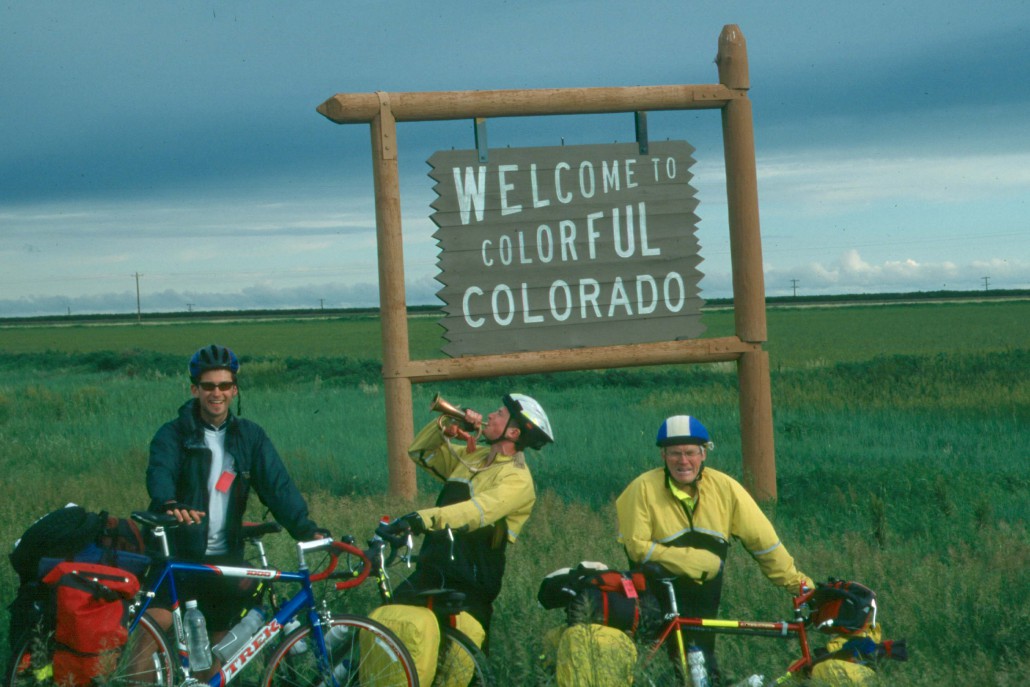
Enjoying a brief pit stop at the border. Pictured from left to right: Tom Hunt (friend of David), David, and Don Kroodsma.
Your new book advocates following one’s dreams. You’ve had TWO successful careers, so what’s your advice for those trying to find their way?
Hmmmm. I hadn’t thought of it that way. I got hooked on birdsong just out of college (“discovered” birds last semester in college, thanks to a requirement for a biology course), and then bumbled my way into birdsong research for a graduate degree, loving all of the (minor) discoveries about how the world of birdsong works. When university life turned unpleasant (politics), I saw an opportunity to slide into doing birdsong on my own, sharing birdsong with a larger audience than one could ever reach in an academic career. This new phase of a “birdsong career” (just one, really) has been especially satisfying.
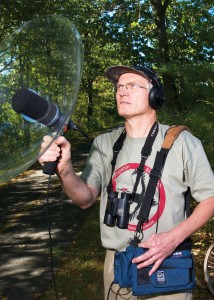 Donald (Don) Kroodsma is professor emeritus of ornithology at the University of Massachusetts, Amherst, and a world-renowned authority on birdsong. He is the author of The Singing Life of Birds, The Backyard Birdsong Guides, and Birdsong by the Seasons. He lives in Hatfield, Massachusetts. Learn more about Don at his website http://donaldkroodsma.com.
Donald (Don) Kroodsma is professor emeritus of ornithology at the University of Massachusetts, Amherst, and a world-renowned authority on birdsong. He is the author of The Singing Life of Birds, The Backyard Birdsong Guides, and Birdsong by the Seasons. He lives in Hatfield, Massachusetts. Learn more about Don at his website http://donaldkroodsma.com.


